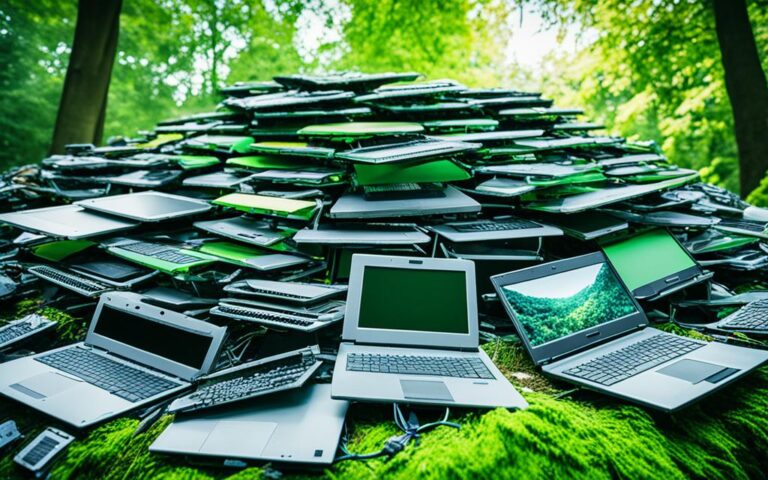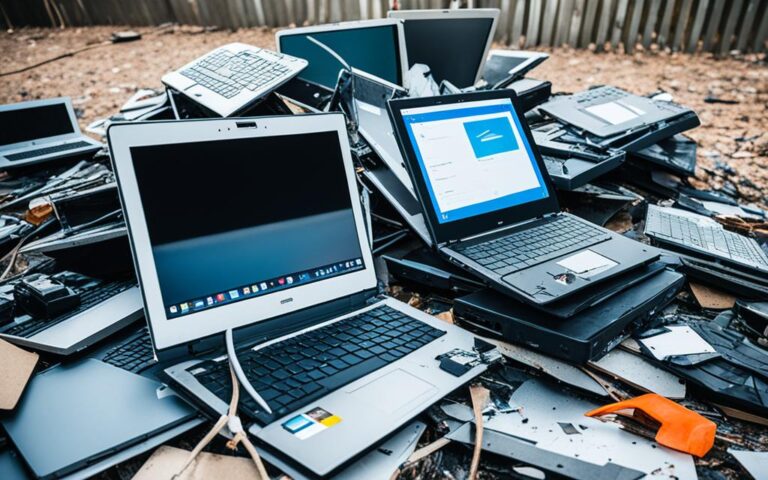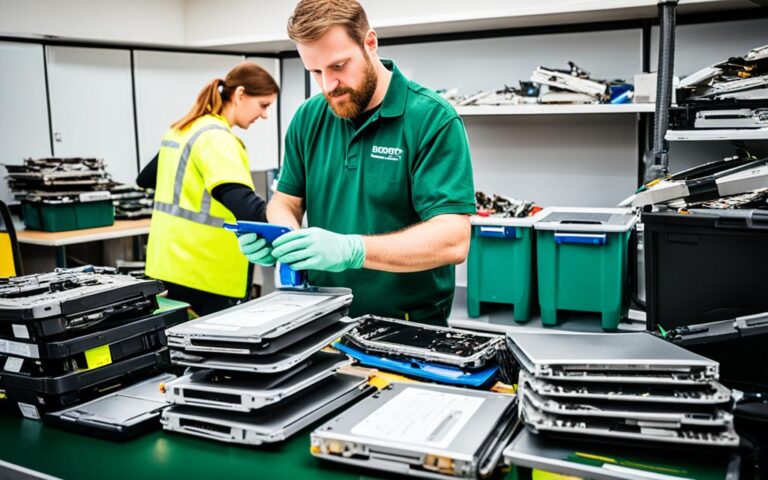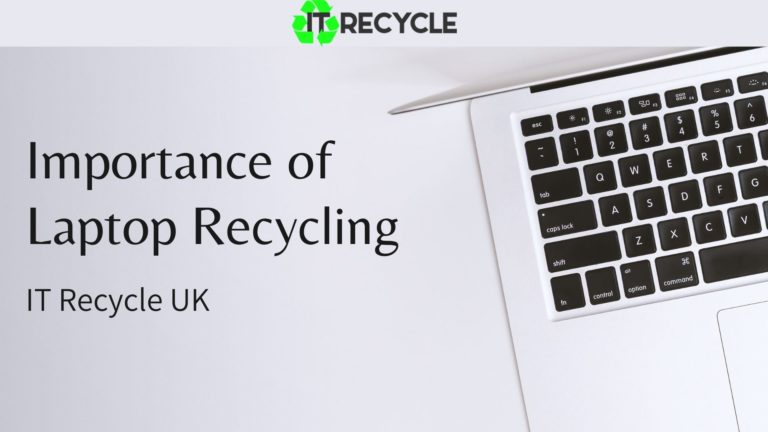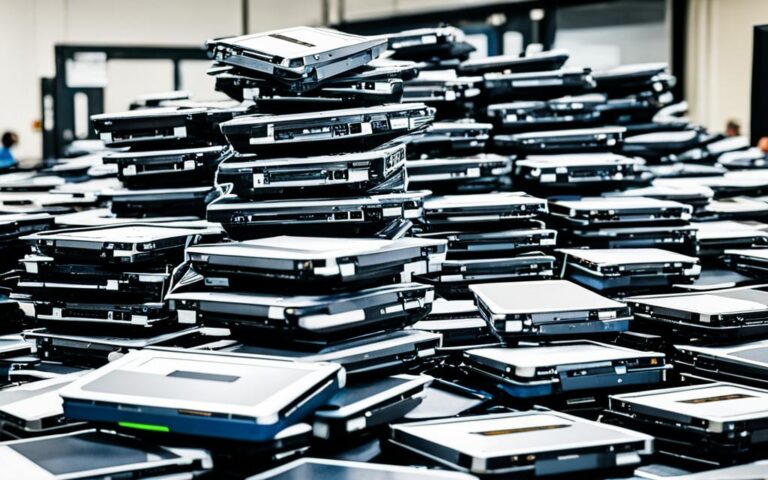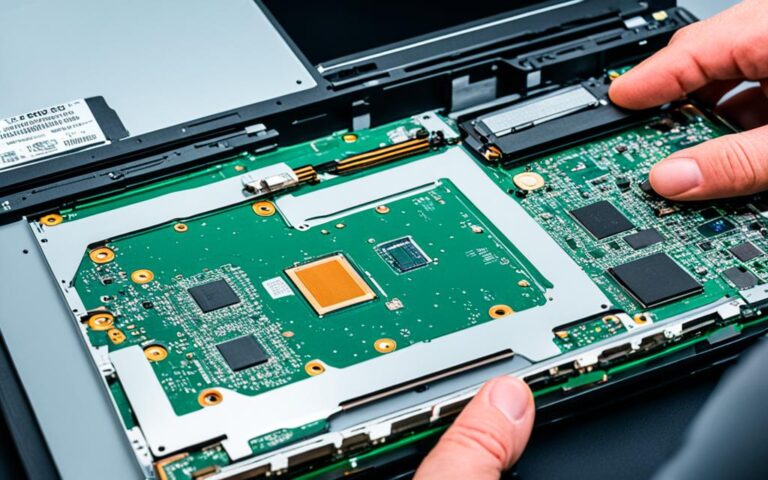How Laptop Recycling Supports Circular Economy Principles
The concept of a circular economy aims to minimise waste and make the most of resources, promoting sustainable practices and resource efficiency. One area where laptop recycling plays a crucial role is in supporting these circular economy principles. By refurbishing, repairing, and repurposing outdated electronic devices, laptop recycling helps extend their lifespan and reduce the demand for new raw materials.
The Environmental Benefits of IT Recycling
IT recycling not only supports the circular economy but also brings various environmental benefits. By diverting electronic devices from landfills, IT recycling helps prevent hazardous substances like lead and mercury from polluting the soil and water, safeguarding ecosystems and reducing health risks. Additionally, recycling IT equipment consumes significantly less energy than manufacturing new devices from raw materials. This reduces the energy-intensive processes of electronics production, contributing to energy conservation and mitigating the carbon footprint associated with manufacturing.
Reducing E-Waste Pollution
Electronic waste, or e-waste, is a growing problem globally. Discarded devices often end up in landfills, releasing harmful substances into the environment. IT recycling plays a crucial role in preventing e-waste pollution by safely disposing of or refurbishing electronic devices. By keeping these devices out of landfills, IT recycling helps protect soil and water quality, preserving ecosystems and reducing the health risks associated with hazardous materials. With proper IT recycling practices, we can reduce the environmental impact of e-waste and create a cleaner and healthier planet.
Conserving Energy and Reducing Carbon Footprint
The production of electronic devices consumes significant amounts of energy and resources. By recycling IT equipment, we can conserve energy and reduce the carbon footprint associated with manufacturing new devices. When electronic devices are recycled, valuable components are salvaged and reused, reducing the need for extracting raw materials. This not only conserves natural resources but also decreases the energy-intensive processes involved in manufacturing. By choosing IT recycling, we actively contribute to energy conservation and the sustainability of our planet.
| Benefits of IT Recycling | Examples |
|---|---|
| Prevention of hazardous substance pollution | By diverting electronic devices from landfills, IT recycling reduces the release of harmful substances like lead and mercury into the environment. |
| Resource conservation | Recycling IT equipment helps conserve valuable resources by salvaging components and reducing the demand for raw materials. |
| Energy conservation | IT recycling consumes less energy compared to the energy-intensive processes involved in manufacturing new devices. |
| Reduced carbon footprint | By recycling IT equipment, we contribute to reducing greenhouse gas emissions associated with manufacturing. |
IT recycling not only supports the circular economy but also brings various environmental benefits.
By diverting electronic devices from landfills, IT recycling helps prevent hazardous substances like lead and mercury from polluting the soil and water, safeguarding ecosystems and reducing health risks. Additionally, recycling IT equipment consumes significantly less energy than manufacturing new devices from raw materials. This reduces the energy-intensive processes of electronics production, contributing to energy conservation and mitigating the carbon footprint associated with manufacturing.
Economic Opportunities in IT Recycling
IT recycling not only benefits the environment but also creates economic opportunities. The recycling industry generates jobs related to the collection, transportation, processing, and refurbishment of electronic devices. This supports local economies and contributes to the overall growth of the green sector. By investing in IT recycling initiatives, businesses can not only demonstrate their commitment to sustainability but also contribute to job creation and economic growth.
The Economic Impact of IT Recycling
IT recycling has a significant impact on the economy, particularly in the green sector. By diverting electronic devices from landfills and establishing efficient recycling processes, IT recycling companies create employment opportunities at different stages of the recycling value chain. Here’s a breakdown of the economic opportunities associated with IT recycling:
| Stage | Economic Opportunity |
|---|---|
| Collection | Job opportunities in collecting electronic devices for recycling, including collection centers, e-waste drives, and designated drop-off points. |
| Transportation | Employment in logistics and transportation services for safely moving electronic devices from collection points to recycling facilities. |
| Processing | Jobs in sorting, disassembling, and separating electronic devices into components and materials for further processing. |
| Refurbishment | Employment opportunities in refurbishing and repairing electronic devices for reuse or resale, reducing the demand for new products. |
The economic opportunities in IT recycling extend beyond job creation. Local economies benefit from increased business activities and revenue generation within the green sector. As businesses invest in IT recycling initiatives, they contribute to the growth and development of environmentally sustainable practices while boosting economic resilience.
Investing in IT recycling not only helps protect the environment but also fosters economic growth by creating jobs and supporting local economies.
By embracing IT recycling, businesses can showcase their commitment to sustainability and responsible resource management. This not only appeals to environmentally conscious consumers but also attracts investors who prioritize organizations that align with sustainable practices. Moreover, governments recognize the economic potential of the green sector and provide support through policies and incentives, further amplifying the economic opportunities associated with IT recycling.
Ultimately, IT recycling presents a win-win situation for businesses, communities, and the environment. As the demand for electronic devices continues to rise, investing in IT recycling not only helps tackle the e-waste challenge but also drives economic growth in the green sector.
The Challenges and Solutions of E-waste Management
Despite the numerous benefits of IT recycling, e-waste management still faces certain challenges. One significant challenge is the lack of awareness among consumers regarding recycling options. Many individuals are unaware of the various methods available for properly disposing of their electronic devices. This leads to the improper disposal of e-waste, ultimately contributing to environmental pollution and resource depletion.
Another challenge in e-waste management is the difficulty in separating valuable components from electronic devices. Many electronic devices contain precious metals, such as gold and silver, as well as other valuable resources. However, without proper dismantling and recycling processes, these valuable components often go to waste, resulting in a missed opportunity for resource recovery and conservation.
To address these challenges, education and awareness campaigns are crucial. By informing consumers about the recycling options available to them, we can encourage responsible e-waste management. These campaigns should highlight the environmental impact of e-waste and emphasize the importance of recycling for a sustainable future.
Technological innovations are also playing a significant role in improving the efficiency of IT recycling. Automated disassembly processes are being developed to streamline the dismantling of electronic devices, allowing for the efficient extraction of valuable components. Advanced material recovery techniques are also being utilized to maximize resource recovery from e-waste.
By combining education and awareness campaigns with technological innovations, we can overcome the challenges of e-waste management and promote sustainable practices in IT recycling.
| Challenges | Solutions |
|---|---|
| Lack of awareness among consumers about recycling options | Educational campaigns to inform consumers about recycling options and environmental impact |
| Difficulty in separating valuable components from electronic devices | Technological innovations, such as automated disassembly processes and advanced material recovery techniques |
Extended Impact of IT Recycling
IT recycling plays a significant role in mitigating resource depletion and addressing the challenges posed by the global e-waste trade. Through responsible recycling practices, IT recycling helps reduce the reliance on virgin resources, contributing to a more sustainable circular economy.
Resource depletion is a pressing issue in today’s world, as the demand for raw materials continues to grow. By salvaging valuable materials from old devices, IT recycling helps preserve these resources and minimizes the need for new extraction, thus supporting the principles of a circular economy.
Furthermore, the global e-waste trade raises concerns about the environmental and social impact of electronic waste disposal. Irresponsible e-waste management often leads to its export to vulnerable regions, contributing to pollution and exposing local communities to health risks. Responsible IT recycling promotes local recycling initiatives, reducing the export of e-waste and fostering a more sustainable approach to e-waste management.
Governmental policies and regulations play a crucial role in ensuring responsible disposal and recycling of IT equipment. By implementing and enforcing strict guidelines for e-waste management, governments can encourage businesses and consumers to adopt sustainable practices. Collaboration among governments, businesses, and consumers is essential for fostering compliance and reducing the negative environmental impact of e-waste.
By embracing IT recycling, individuals, businesses, and governments can contribute to building a more sustainable future. Together, we can protect our finite resources, mitigate the global e-waste trade, and promote a circular economy that prioritizes resource efficiency, environmental responsibility, and long-term sustainability.
Conclusion
In conclusion, laptop recycling plays a vital role in supporting circular economy principles and promoting sustainability. By extending the lifespan of electronic devices, reducing e-waste pollution, and creating economic opportunities, IT recycling aligns with the core principles of the circular economy. Through responsible IT recycling practices, we can address the growing e-waste problem and work towards achieving a more sustainable and environmentally conscious future.
The adoption and implementation of responsible IT recycling practices are crucial in preserving our planet and the well-being of future generations. By actively participating in and supporting IT recycling initiatives, individuals, businesses, and policymakers can contribute to the preservation of our natural resources and reduce the negative environmental impact of electronic waste.
Together, we can make a difference and help build a circular economy where resources are used efficiently, waste is minimized, and sustainability is prioritized. By embracing laptop recycling and its positive impact on the environment, we can pave the way for a more sustainable future and create a world where electronic devices are not only functional but also contribute to the well-being of our planet.
FAQ
What is the circular economy?
The circular economy aims to minimize waste and make the most of resources by designing products to be reused, repaired, and recycled, reducing strain on finite resources.
How does IT recycling support the circular economy?
IT recycling plays a pivotal role in the circular economy by refurbishing, repairing, and repurposing outdated electronic devices, extending their lifespan and reducing the demand for new raw materials.
What are the environmental benefits of IT recycling?
IT recycling helps prevent hazardous substances like lead and mercury from polluting the soil and water, safeguards ecosystems, reduces health risks, and consumes significantly less energy than manufacturing new devices from raw materials, thereby conserving energy and mitigating the carbon footprint associated with manufacturing.
How does IT recycling create economic opportunities?
The recycling industry generates jobs related to the collection, transportation, processing, and refurbishment of electronic devices, supporting local economies and contributing to the overall growth of the green sector.
What are the challenges in e-waste management?
Challenges include the lack of awareness about recycling options among consumers and the difficulty in separating valuable components from electronic devices.
How can these challenges be addressed?
These challenges can be addressed through education and awareness campaigns to inform consumers about recycling options and the environmental impact of e-waste. Technological innovations, such as automated disassembly processes and advanced material recovery techniques, are also improving the efficiency of IT recycling.
How does IT recycling contribute to mitigating resource depletion?
IT recycling salvages materials from old devices, reducing the reliance on virgin resources and addressing the issue of global e-waste trade by promoting local recycling initiatives and reducing the export of e-waste to vulnerable regions.
What is the role of governmental policies in responsible IT recycling?
Governmental policies and regulations play a crucial role in ensuring responsible disposal and recycling of IT equipment, fostering compliance and promoting a sustainable approach to IT recycling.








